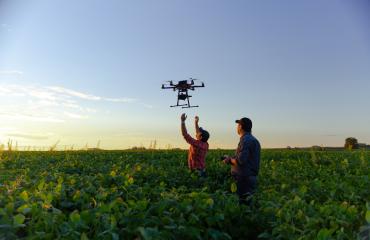In April 2023, the department released a research report, delivered in partnership with iMOVE and the University of South Australia, investigating the benefits and challenges of increased drone uptake in Australia. The report identifies a number of industries that could greatly benefit from increased drone use, including emergency relief and disaster management, security services, freight, agriculture, last-mile deliveries, recreation and entertainment.
Key findings include:
- a net productivity increase of 10 per cent for Australia’s emergency services sector, resulting in a $460 million net boost to the national economy
- savings of between $1-8 billion from the use of drones in early fire detection (based on modelling using data from the 2019-20 bushfire season).
